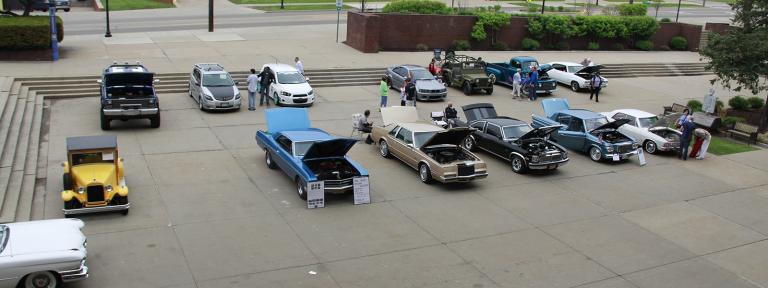
He and Dr. Greg Davis, professor of Mechanical Engineering, are studying the effects of ethanol-blended fuels on the engines and fuel systems of classic cars to determine if they accelerate corrosion and cause component failure at the request of Hagerty Insurance Agency in Traverse City, Mich. Also working on the project is Dr. Chuck White, from Kettering's Industrial and Manufacturing Engineering Department, who is serving as the team's materials expert and is helping evaluate damage to parts.
Hagerty insures more than 600,000 collector cars and a number of vintage boats, and they have funded a $50,000 study with Kettering’s Advanced Engine Research laboratory (AERL) to explore the effects of bio-fuels on older engines.
“We serve the hobby in many ways, so we felt it was important to ascertain the impact of ethanol-blended fuel on collector cars and boats,” Hagerty CEO McKeel Hagerty was quoted as saying in the on-line edition of AutoWeek.
Currently, most automotive fuel (gas) has at least 10 percent ethanol content. (Not all marine gas is ethanol-blended, and some vintage boats have had problems with ethanol blended fuel.)
In lower concentrations, ethanol may soften materials such as seals and gaskets, which get brittle and fail, Hoff said.
“We had to decide which issue we wanted to tackle first,” said Hoff, “and we decided to focus on the low blend fuels first.” The team plans to test classic car components to determine the effects of fuel from a commercial gas station, which is about 10 percent ethanol, and compare it to results when using pure gasoline with no ethanol.
The project will be conducted on two levels: general material compatibility and ethanol compatibility testing on specific material and parts which are likely to be used in the classic automobile community.
Because ethanol is hydrophilic it will absorb water from the ambient air. In a sealed fuel system, such as those on modern vehicles, the ethanol will remain mostly anhydrous. However, in a classic car lacking a sealed fuel system, the fuel can potentially absorb a significant amount of water from the ambient air. It is believed that this water content can increase the corrosion in fuel system components.
Ethanol will be aged in open wet air for one month to allow the fuel to pick up water. For control purposes the un-blended gasoline used in the testing will also be aged this way. Additionally, some of the ethanol will be aged in wet salt-air to simulate conditions in locations with salt-water.
“We will run 12 different tests on 12 common components from six classic cars,” said Hoff. Following modifications to the fuel room they have created, testing of all 12 components will get underway, he said.
Plans also include cutting up a third and fourth set of parts, such as sections of the fuel tank and gaskets, immersing them in ethanol-blended fuel and pure gasoline and repeatedly exposing them to air to accelerate corrosion. In addition, control chips made of materials known to be sensitive to ethanol, like aluminum, will be placed in the testing tank.
“We can’t cut up the parts we are using in the simulator,” said Hoff, “so this allows us to see 'inside' the components during testing,” said Hoff.
The corrosion testing has proven to be the most problematic part of the process. “We have to be very careful because fuel is highly flammable,” said Hoff. He and Davis had to create a special room for the test. The room has to have a high rate of exchange of fresh air requiring them to use compressed air and special fans. “We want to perform safe tests,” said Hoff.
“There is a lot of opportunity to pursue this line of inquiry because there are many people who want to know more about this subject,” Hoff said. "It’s amazing the amount of interest there is in this study.”
Despite the comprehensive testing they are performing, Hoff and Davis do not anticipate sludge and corrosion to be the most critical issue related to using ethanol-blended fuels in classic cars. “Most likely the biggest problem will be with gaskets made of rubber,” explained Hoff.
Until the study is complete, classic car owners might want to take a few precautions, such as: drain and clean their car’s fuel tank; use a fuel tank sealer that is impervious to ethanol; keep all screens clear; and use a fuel tank stabilizer if the car is to be stored for long periods of time.
Information from the Jan. 14 edition of AutoWeek Magazine was included in this story.
Dodge Challenger Information on Car and Driver
Written by Dawn Hibbard
810.762.9865
dhibbard@kettering.edu